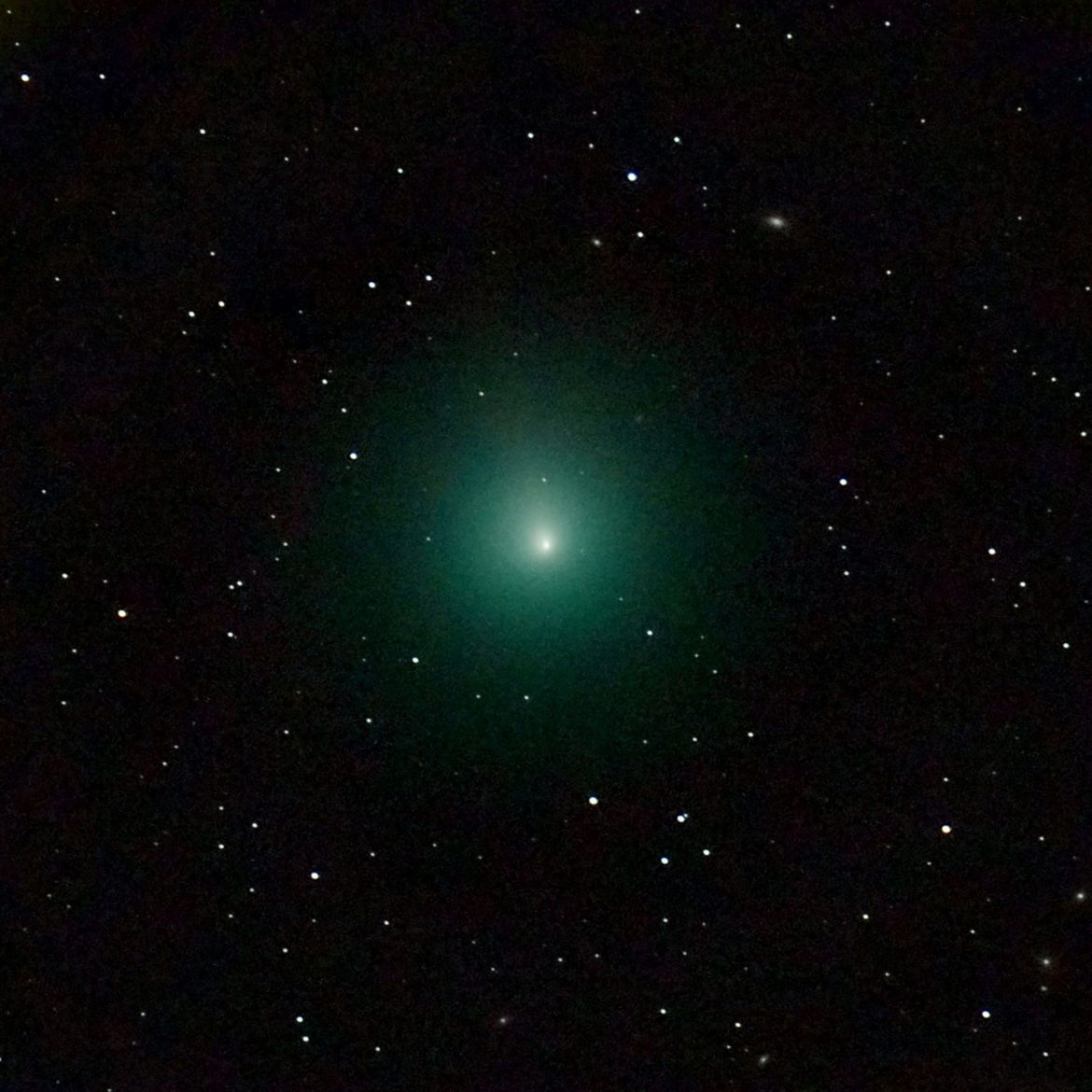Just in time for the holiday season, a comet first observed more than 70 years ago has returned for one of its periodic visits — and this flyby of the “Christmas comet” is one of the closest in recent history.
“By my count, there have been only about 10 other known comets that approached this close over the last century,” Paul Chodas, a scientist at NASA’s Jet Propulsion Laboratory in Pasadena, California, told NBC News MACH in an email, adding that astronomers were excited about the chance to observe it.
The comet, 46P/Wirtanen, made its closest approach on Sunday, when it was about 7.1 million miles from Earth (about 30 times the distance from Earth to the moon). The comet hasn’t come this close for centuries and won’t come this close again for centuries, according to Chodas.
The comet should be visible for several more days — at least for those with the right gear.
“The odds are against seeing it with just your eyes, though there is no harm in trying,” Jay Pasachoff, an astronomer at Williams College in Williamstown, Massachusetts, said in an email. You’ll have better luck with a telescope or wide-field binoculars, he said — just be sure to find a viewing place away from lights that might interfere with your night vision.
Wirtanen’s position is constantly changing. Right now it appears to be near the Pleiades, a star cluster in the constellation Taurus.
For specific instructions on how to locate the comet in the sky, astronomers at the University of Maryland have prepared a set of star charts. If you’d rather not try your luck outdoors, the Virtual Telescope Project is using its robotic telescopes for a free live-stream of the comet on Tuesday at 5 p.m. ET.
Comets are loosely bound collections of ice, dust and rock that have been likened to dirty snowballs. They move around the sun in highly elliptical orbits.
More than 6,300 comets have been identified, though no one knows exactly how many there are.
Wirtaren is about 0.7 mile wide and orbits the sun once every 5.4 years. It was discovered on Jan. 17, 1948, by astronomer Carl Wirtaren at the Lick Observatory in Santa Clara County, California.
By David Freeman, NBCNews.com

